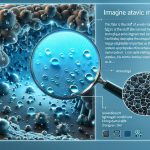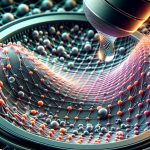When you consider the impact of nanotechnology on fabric performance, you might first think of durability and strength. However, there's so much more to explore. Imagine fabrics that resist stains, repel water, and even clean themselves—no more worrying about spills or unexpected rain. Additionally, these advanced textiles can regulate temperature and wick moisture, making them perfect for both everyday wear and extreme conditions. But how exactly does nanotechnology achieve all this, and what future developments can we expect in the textile industry?
Table of Contents
Key Takeaways
- Nanotechnology increases fabric durability, ensuring long-lasting strength and resilience against physical stress.
- Enhanced endurance and wrinkle-free properties help fabrics maintain their original appearance and texture.
- Water and stain repellence from nanotechnology reduces the need for frequent chemical treatments and washing.
- Self-cleaning fabrics with hydrophobic coatings save time, reduce water consumption, and promote eco-friendliness.
- Nanotechnology supports sustainable living by minimizing resource usage, waste, and carbon footprints.
Enhanced Durability
Incorporating nanotechnology into fabrics greatly enhances their durability, ensuring they withstand wear and tear far better than traditional materials. Imagine owning garments that don't fray at the seams or lose their shape after a few washes. With the integration of nanoscale particles, your fabrics gain long lasting strength, making them ideal for both everyday wear and demanding environments. You won't find yourself replacing items as often, resulting in a wardrobe that stands the test of time.
By embedding nanoparticles into the fibers, fabrics achieve improved resilience against physical stress. This means those favorite jeans won't rip at the knees so easily, and your sportswear will endure those intense workouts without breaking down. Enhanced endurance is another significant benefit. The fibers become more resistant to abrasion, cuts, and general wear, providing you with increased longevity for your clothing.
Nanotechnology not only strengthens the fabric but also helps maintain its original appearance and texture. Your clothes will look newer for longer, preserving that fresh-from-the-store look and feel.
Embrace the future of textiles and enjoy the unmatched durability that nanotechnology offers, ensuring your garments remain reliable and robust for years to come.
Water-Resistance
Thanks to nanotechnology, fabrics can now repel water, keeping you dry even in the heaviest of downpours. Imagine wearing a jacket that not only keeps rain out but also allows your skin to breathe. Nanotechnology makes that possible by creating a layer of breathable protection. This guarantees that while water droplets can't penetrate the fabric, airflow remains uncompromised, maintaining your comfort and preventing overheating.
Moreover, this advanced water-resistance doesn't come at the expense of environmental responsibility. Nanotechnology paves the way for sustainable innovation by reducing the need for harmful chemical treatments traditionally used to make fabrics water-resistant. These treatments often degrade over time and pose environmental hazards, but nanotechnology offers a more durable, eco-friendly alternative.
When you choose garments enhanced with nanotechnology, you're not just opting for superior performance; you're also making a conscious choice towards sustainability. The integration of nanotechnology in fabric manufacturing minimizes resource usage and extends the lifespan of your garments. This means fewer replacements and less waste, aligning with sustainable living principles.
Stain-Repellence
Nanotechnology enables fabrics to repel stains, keeping your clothes looking fresh and clean longer. By integrating nanoparticles into fabric fibers, manufacturers create a barrier that prevents liquids and dirt from seeping in. This innovation doesn't just enhance your wardrobe; it also offers significant sustainability benefits. You won't need to wash your clothes as frequently, reducing water usage and the environmental impact of detergents.
Embracing stain-repellent fabrics aligns with growing consumer preferences for low-maintenance, high-performance clothing. As market demand for these advanced textiles increases, you can expect to see more options that cater to your lifestyle needs. Imagine the convenience and cost savings of clothing that resists spills and marks effortlessly.
Consider these emotional benefits:
- Confidence: Wear your favorite outfit without worrying about accidental spills.
- Convenience: Spend less time washing and more time doing what you love.
- Sustainability: Contribute to a greener planet by lowering your laundry frequency.
- Longevity: Enjoy clothes that look new for longer, preserving your investment.
Self-Cleaning Fabrics
You'll be amazed at how nanotechnology transforms fabrics into self-cleaning wonders.
With hydrophobic coatings, liquids and stains can't penetrate, reducing the need for constant washing.
This means less maintenance and more time enjoying your favorite clothes.
Hydrophobic Coating Benefits
Imagine a world where your clothes repel stains and dirt, staying clean with minimal effort due to hydrophobic coatings. This isn't science fiction—it's the reality that nanotechnology brings to fabric performance. Hydrophobic coatings guarantee your clothes remain breathable while maintaining their chemical composition, allowing you comfort without compromise.
These coatings form a protective barrier that keeps water and oils at bay, making fabric maintenance simpler and more efficient.
The benefits of hydrophobic coatings extend beyond convenience and comfort. They also align with environmental impact and shifting consumer preferences. By reducing the frequency of washing, you contribute to water conservation and lower detergent use. Additionally, the longevity of your garments increases, reducing textile waste and promoting sustainability.
Consider the emotional impact of these four benefits:
- Time-saving: Spend less time worrying about stains.
- Cost-effective: Extend the lifespan of your favorite clothes.
- Eco-friendly: Play a part in conserving water and reducing chemical runoff.
- Effortless elegance: Always look polished without the hassle.
Embrace the future of fabric technology and enjoy the mastery over one of life's everyday challenges with hydrophobic coatings.
Reduced Maintenance Efforts
Self-cleaning fabrics significantly reduce the time and effort you spend on laundry. These innovative applications utilize nanotechnology to create materials that repel dirt and stains, offering you time-saving solutions that simplify your daily routine.
Imagine a world where your clothes stay clean longer, requiring less frequent washing. This isn't just a fantasy; it's a reality made possible by nanotechnology.
By adopting self-cleaning fabrics, you're embracing eco-friendly alternatives that align with sustainable practices. Less frequent laundering means lower water consumption and reduced use of detergents, directly contributing to environmental conservation. Additionally, these fabrics maintain their cleanliness through mechanisms like photocatalysis, where light activates the breakdown of organic materials on the fabric's surface. This not only extends the life of your garments but also lessens the impact on the environment.
You'll find that self-cleaning fabrics come with a host of benefits beyond just cleanliness. They're designed to be durable and resilient, ensuring long-term performance.
As a forward-thinking individual, integrating these advanced textiles into your wardrobe offers a seamless blend of convenience and sustainability, reflecting a commitment to both personal efficiency and ecological responsibility.
Wrinkle-Free Textiles
Thanks to advancements in nanotechnology, wrinkle-free textiles have become a practical and popular choice for everyday wear. You no longer need to worry about ironing or spending time on garment upkeep. These innovative fabrics are engineered to maintain a smooth appearance throughout the day, contributing to a polished look with minimal effort.
Embracing wrinkle-free textiles means you're also supporting eco-friendly production methods and sustainable materials. Traditional wrinkle-resistant treatments often involve harsh chemicals that can harm the environment. In contrast, nanotechnology offers a cleaner alternative, utilizing advanced techniques that reduce environmental impact. By choosing these textiles, you're making a conscious decision to support sustainability.
Here are a few compelling reasons why you should consider adding wrinkle-free textiles to your wardrobe:
- Time-Saving: Spend less time ironing and more time on things that matter.
- Professional Appearance: Look sharp and crisp, even after a long day.
- Durability: Enjoy fabrics that retain their shape and smoothness over time.
- Eco-Friendly Choice: Support sustainable practices and reduce your carbon footprint.
Temperature Regulation
Building on the benefits of wrinkle-resistant textiles, nanotechnology also enhances fabric performance by regulating temperature to keep you comfortable in various conditions. Imagine wearing a garment that adapts to your body's needs, providing warmth when it's cold and cooling you down when it's hot. This is made possible through advanced thermal regulation properties embedded in the fabric at the nanoscale.
By integrating nanomaterials like phase-change materials (PCMs) and nano-coatings, fabrics can absorb, store, and release heat efficiently. This not only ensures ideal comfort but also contributes to energy efficiency. No longer will you need to rely solely on external heating or cooling systems; your clothing itself can manage your thermal comfort.
Moreover, nanotechnology enhances breathability, allowing air to circulate freely while maintaining the fabric's insulating properties. This balance is essential, as it prevents overheating and promotes a comfortable microclimate close to your skin.
Whether you're facing a sweltering summer day or a chilly winter evening, nanotechnology in textiles ensures you're always at the right temperature. With these advancements, you gain a level of control over your personal comfort that's both sophisticated and practical.
Moisture-Wicking
Nanotechnology revolutionizes moisture-wicking fabrics by enabling them to draw sweat away from your skin more efficiently. Imagine going for a run or hitting the gym and feeling dry and comfortable the entire time. That's the power of advanced moisture-wicking technology at work.
With nanotechnology, these fabrics offer superior breathable comfort by creating microstructures that enhance air circulation. This means you'll stay cool and dry, no matter how intense your workout gets.
Additionally, the incorporation of nanoparticles helps in odor control, ensuring you remain fresh by neutralizing the bacteria that cause unpleasant smells.
Here's why you'll love these innovations:
- Enhanced Performance: Nanotechnology makes the fabric work harder, so you don't have to.
- Increased Durability: These fabrics are designed to withstand wear and tear, maintaining their wicking properties longer.
- Breathable Comfort: Improved airflow keeps you cooler, making your exercise sessions more enjoyable.
- Odor Control: Stay confident and fresh with fabrics that actively combat odor-causing bacteria.
Future Developments
Looking forward, the potential for even more groundbreaking advancements in fabric performance through nanotechnology seems limitless. Imagine fabrics that not only wick moisture but also adapt to environmental conditions, providing maximum comfort.
While these innovations are thrilling, addressing the sustainability challenges they pose is vital. Are the materials used eco-friendly? Will they decompose without harming the environment? You must tackle these questions for long-term viability.
Consumer acceptance is another vital factor. Despite the allure of cutting-edge technology, consumers won't adopt it if they're skeptical about its benefits or safety. Clear communication and demonstrable advantages will be key to overcoming this obstacle.
Additionally, cost implications can't be overlooked. Advanced nanotechnology often comes with a hefty price tag, which could deter widespread adoption unless manufacturing processes become more cost-effective over time.
Regulatory concerns also loom large. As nanotechnology in fabrics evolves, so too must the regulations governing their use. Ensuring safety standards are met will be essential to prevent potential health risks.
Frequently Asked Questions
How Does Nanotechnology Impact the Cost of Producing High-Performance Fabrics?
You'll find nanotechnology boosts cost efficiency in producing high-performance fabrics. Production advancements streamline processes, reducing waste and energy use. Over time, these innovations lower overall costs while enhancing fabric quality and durability.
Are Nanotechnology-Enhanced Fabrics Safe for Individuals With Sensitive Skin?
You won't have to worry—nanotechnology-enhanced fabrics are generally safe for sensitive skin. These fabrics undergo rigorous testing to minimize skin reactions and allergies, ensuring fabric safety for everyone, including those with delicate skin.
Can Nanotechnology in Fabrics Contribute to Reducing Environmental Waste?
Yes, nanotechnology in fabrics can greatly contribute to waste reduction and sustainability. By enhancing durability and reducing the need for frequent replacements, this innovation helps minimize environmental impact, promoting a more eco-friendly lifestyle.
How Does Nanotechnology in Fabrics Affect Recycling Processes?
Imagine a double-edged sword: nanotechnology in fabrics can enhance recycling efficiency, but it might complicate sorting processes. While it reduces environmental impact, specialized recycling techniques are often needed, posing challenges for achieving true sustainability.
What Types of Clothing Benefit Most From Nanotechnology Enhancements?
You'll find that athletic wear benefits most from nanotechnology enhancements, boosting durability and performance. Fashion pieces also gain versatility, allowing designers to create innovative, functional clothing that adapts to various conditions while maintaining aesthetic appeal.
- How Does Ring Spun Cotton Affect Garment Fit and Shape Retention? - August 13, 2024
- What Are the Challenges in Producing Ring Spun Cotton? - August 13, 2024
- Is Ring Spun Cotton Suitable for Plus-Size Clothing? - August 13, 2024







